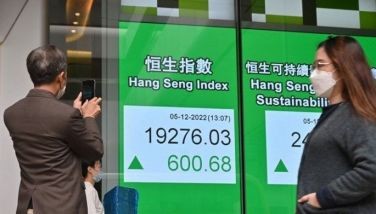Greener grass

The grass is always greener on the other side.
While most Filipinos believe in this saying, it sometimes comes as a surprise to us when visiting foreigners or relatives who grew up in another country express envy at our way of life, and what they perceive as the affordable cost of living in the Philippines.
Some relatives from Down Under who arrived during the Holy Week appreciate the fact that there is an abundance of fast food chains that offer a variety of affordable meals unlike in their country where they claim there are only a handful, with the cheapest meals mostly sandwiches.
Furthermore, they say, restaurants in Australia close quite early, around 4 p.m. to 5 p.m. unlike in the Philippines where we have several fast food chains that remain open to service the call centers and BPO workers who work at night.
Journalists who had joined the Philippine Airlines inaugural flight to Perth, Australia last year had experienced for themselves just how early shops and restaurants close in that city, describing their nighttime walks as passing through a ghost town by 9 p.m.
Additionally, we have a slew of 24-hour convenience stores that offer a variety of hot meals – from the common fried chicken and pork cutlets to pre-cooked, microwavable meals, and recently even the oden-style Japanese and Korean fishcakes, tofu, etc.
The presence of Chinese POGOs who also work at night has also resulted in some delicious Chinese-owned and operated restaurants. Unfortunately, the crackdown on POGOs is resulting in a decline of the Chinese-operated restaurants.
Likewise, the popularity of the Philippines to Korean tourists has resulted in the proliferation of several Korean and Filipino barbecue restaurants that operate up to the early morning hours, also offering delicious grilled barbecue meats with an assortment of side dishes.
Even though my relatives had arrived right smack at the start of Holy Week, Manila no longer completely shuts down with some restaurants still open, and even some malls.
The massive malls, according to the visiting Aussies, are also in stark contrast to their much smaller strip shopping areas. Even I, who have recently been freed from desk work, have been pleasantly amazed at how our different shopping malls have evolved into mini community centers with its mixture of medical and aesthetic clinics, travel and tour agencies, beauty salons and spas, religious chapels, supermarkets, assortment of restaurants, department stores, specialty repair shops, amusement and game arcades and even concert, sports and show venues.
Cost of living
I was likewise surprised to learn that while in peso terms (A$1 is equivalent to P34) Australians seem to earn quite a substantial amount – with a bank teller earning around A$60,000 a year or about A$5,000 – the cost of living is quite high especially with taxes ranging from 33 percent in income tax and up to 49 percent inclusive of value added tax.
The high income tax, however, offers outstanding health coverage for Australians.
House rental costs in Sydney can range from A$800 to A$1,000 a week for a one-bedroom apartment. As such, my relatives reveal, just like in America, there are quite a number of Aussies who opt to live in their car because of the high cost of rent in major cities like Sydney.
A recent Korean reality show titled ‘Busan Boys: Sydney Bound‘ had also placed the rent for their five cast members at A$1,500, with their working visa jobs as agricultural worker/market vendor, janitor/tile layer, coffee shop waiter/barista earning a daily wage ranging from A$200 to A$250 for eight hours of hard manual work.
The typical work days for the Korean cast started at around 7 a.m, with a one hour lunch break and resumption of work from 1 p.m to 4 p.m.
It was quite interesting to see the Korean actors take on real manual work for the show and realize just how much hard work their employers look for.
Thus, in the Philippine setting, most manual workers and even ordinary workers would get the false illusion that things are much better elsewhere when they convert the amount that they get there to the amount that they would get here in peso terms, even though the comparative cost of living in developed countries is much more expensive.
Major downside
Unfortunately, the ultimate deal breaker, my visiting relatives admit, is the lack of institutional governance, noting the difficulty in securing any government permit, petty corruption, and the lack of a grievance or complaint mechanism to address contractual disputes and the difficulty of finding judicial relief.
The high cost of medical care is another major downside for most balikbayans who are mulling a return to the country. Thus, while a big chunk of their income is collected by their government, they are assured in their old age of getting the proper medical care they need.
We did not get to the topic of traffic yet as Manila was so calm during Holy Week and driving around the metropolis and even to the nearby province of Bulacan to see the Holy Week procession was a breeze. They have gone off to visit Bohol and Boracay to enjoy our famous beaches, but I’m sure that when they get back to the city they will appreciate just how much better their commute in their second home is.
- Latest
- Trending


























